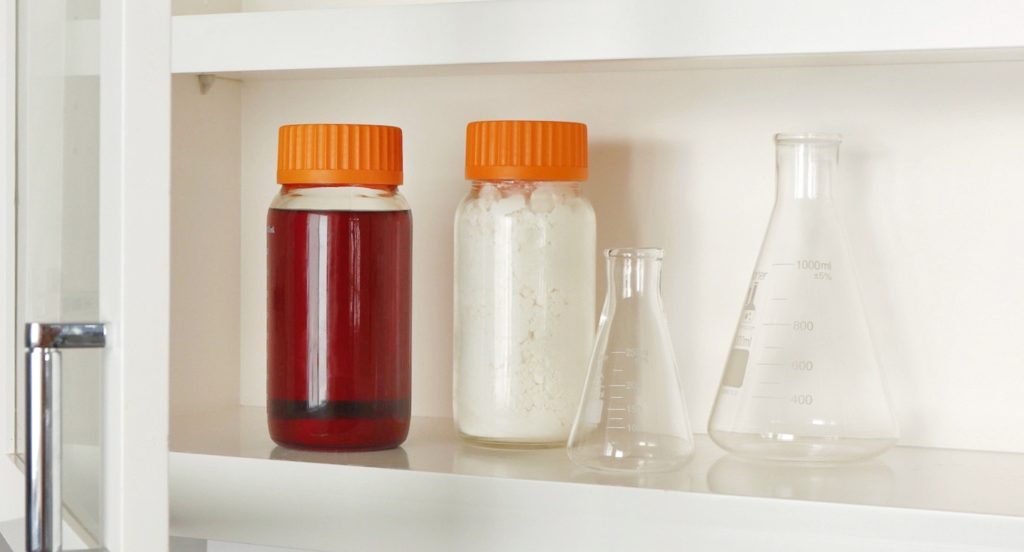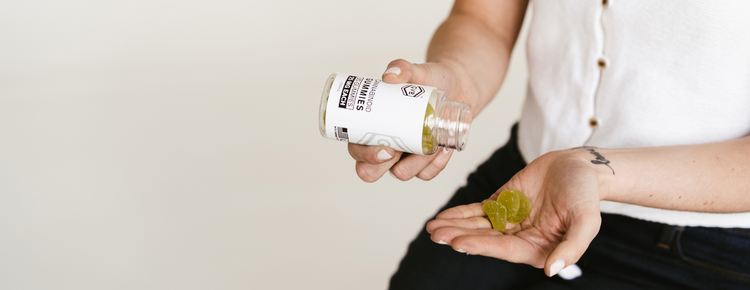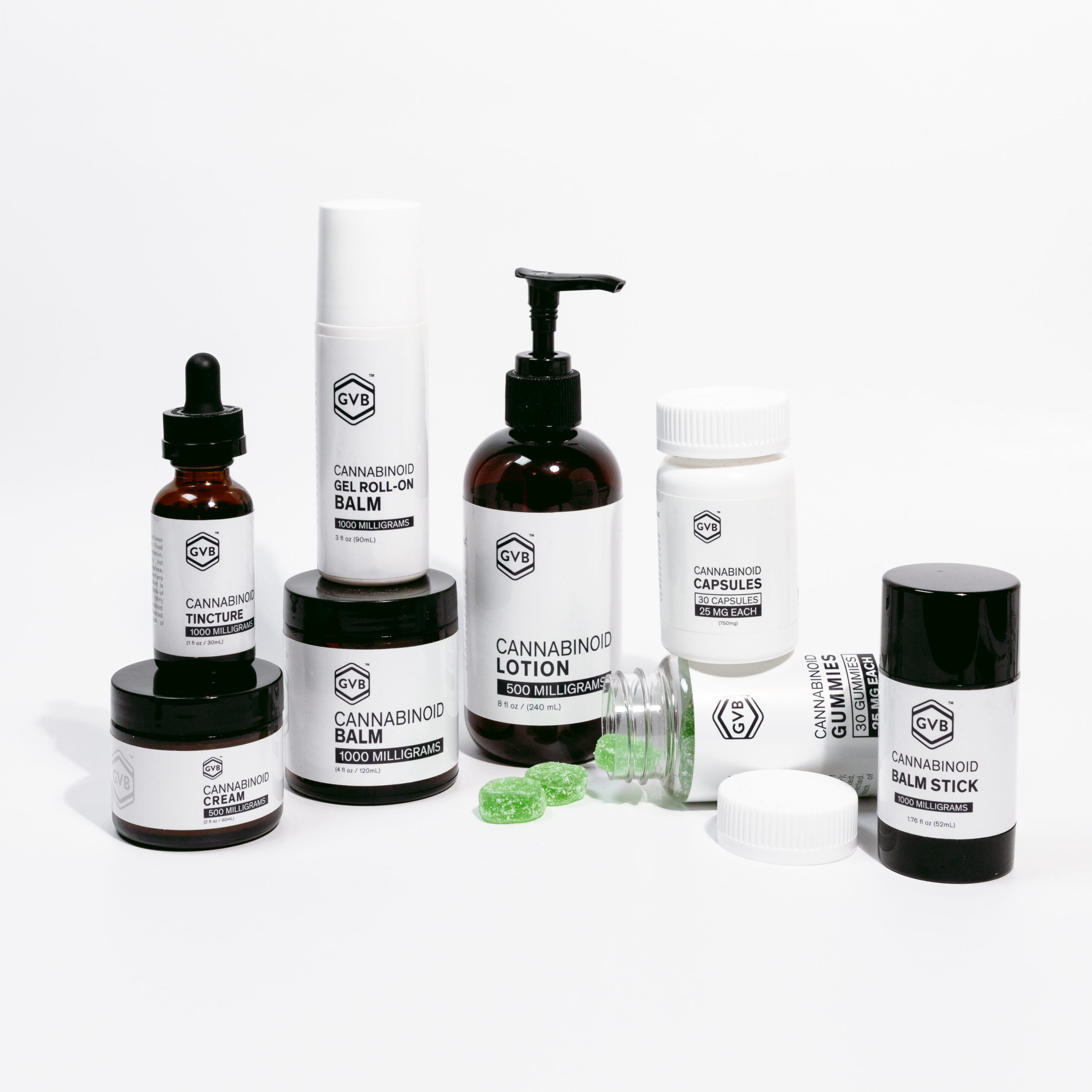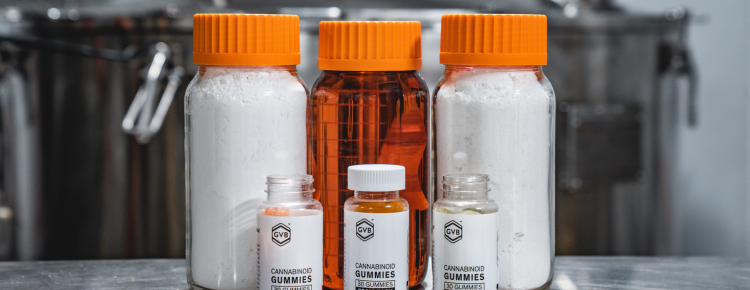Marketing a hemp product presents unique challenges, but there’s also plenty of room for opportunity. From how to formulate a good product to the various marketing methods that are available, it pays to know as much as you can before your brand launches.
In this guide, we’ll begin by covering the most important information you need to know about marketing cannabinoids. Then, we’ll continue on into an in-depth exploration of how to market cannabinoids in today’s industry, and we’ll finish by explaining the steps you’ll take to launch a successful hemp brand.

Cannabinoid marketing overview
Marketing cannabinoids isn’t like selling anything else. Here are just a few examples of the unique factors you’ll need to keep in mind when selling cannabinoid products online or in-store:
– Certain cannabinoids remain in a legal gray area
– As a result, many major ad providers don’t allow the promotion of cannabinoid products
– With many traditional options unavailable, cannabinoid marketing largely centers around organic content
So, to market cannabinoids effectively and without any hiccups along the way, you’ll need to:
1. Educate yourself regarding the current status of cannabinoid laws and regulations
2. Explore alternative marketing approaches
3. Perpetually innovate to stay abreast of the constantly changing hemp industry
Despite initial hurdles you’ll need to overcome, the cannabinoid industry is blossoming with opportunities. Cannabinoids offer genuine benefits, and consumer demand for hemp remains unabated regardless of the current absence of federal government guidance.
True entrepreneurs have always operated outside the mainstream. Marketing cannabinoids simply makes it easier to harness your full entrepreneurial creativity by pushing you to do things your own way.
What is the target market for cannabinoids?
The beauty of cannabinoids lies in their universal appeal. While younger consumers are more likely to be willing to try cannabis in general, older folks are just as interested in cannabinoids due to the perception that they may help with pain relief, mood, or a variety of other common conditions.
In truth, the stigma around the word “cannabis” has dropped significantly. You’d be surprised by how many individuals come around after witnessing the power of these beneficial (and usually non-intoxicating) substances. The cannabinoid cause is truly universal, so it’s just a matter of getting your product in front of the eyes of consumers and differentiating it from the competition.
How do you market cannabinoids?
Due to the unique regulatory environment surrounding cannabinoids, marketing these natural hemp substances can seem harder than it actually is. To show you just how easy it can be to convince consumers to buy your cannabinoid products, we’ll break the process down into three parts: the product, the message, and the methods.
Part 1: The product
Your product should always be the crux of your business and your main focus when beginning to develop a new brand or product line. Instead of making the product the annoying necessity of your marketing plan, make it the center—that’s how successful brands begin.
Quality
Consumers want quality, and they’re getting better at sniffing it out¹. Don’t fall for the allure of deceiving your customers with second-rate products if your end goal is to have a first-rate brand. The truth will come out eventually, and even if you get away with it, there’s still such a thing as right and wrong. Formulate a quality product, and your brand will reap the benefits for years to come.

Diversification
No matter how great your product is, it will likely get swallowed up in the noise created by competing brands unless you make it stand out properly. Diversification is the process of making your product look different from your competition. It doesn’t have to be cheaper, and it doesn’t have to be better. It just has to be different enough to stand out and grab those few seconds of consumer attention² that can ultimately lead to a sale.
Formulation
When it comes to generating repeat customers, it’s what’s under the hood that matters. Taking the time to formulate a uniquely beneficial product will ensure your customers achieve the results they desire, cementing your brand as a reliable provider of a quality product.
Part 2: The message
A product can’t speak for itself. With the right labeling and branding, however, it can captivate your customers long enough to drive sales, but only if you have the core vision to see your project to completion.
Labeling
A cannabinoid product’s labeling should be visually pleasing without being overwhelming. All the important information, including potency and ingredients, should be there. It would be counterproductive, though, to cover your label with too much distracting text and imagery.
Branding
Branding is to marketing as diversification is to product formulation. Your highly diversified product will get lumped in with average competitors unless you properly communicate the unique selling proposition³ of your product—and, even more importantly, how that individual product fits into your overall brand.
Vision
Your brand will fail unless you know what you want to achieve. Every step you take—from product formulation to labeling to branding—should further the overall goal or vision of your enterprise. You want to make money, of course, but how can you convey your vision to consumers in a way that kindles a positive reaction?
Part 3: The methods
Now that you know what to do when it comes to marketing cannabinoids, we need to tell you how to do it. As we mentioned in the beginning, your marketing options are unusually curtailed when you’re selling cannabinoids, but we’ll show you how to see this as an opportunity instead of a hindrance.
Pay-per-click
Despite what you may have heard, it’s possible to purchase pay-per-click (PPC) ad coverage for cannabinoid products. If you want to advertise with Google, Meta, or any of the other big players, though, you’ll need to jump through a ridiculous number of hoops only to most likely get your account suspended anyway without a satisfying explanation. As a result, most cannabinoid brands only utilize PPC ads once they’ve achieved a level of success where it’s possible to funnel funds into a wide variety of projects.
Social media
Although pay-per-click ads may be outside of your brand’s marketing scope, you can still jump on the power of social media marketing anyway. Some cannabinoid brands have amassed whole fleets of influencers who convince their followers to buy products through posts they personally craft. Influencers can be notoriously finicky to work with, and getting enough of them on payroll to make a difference requires a significant time investment. That being said if you have the time, and select the proper influencers to market your products, this can be a very profitable route for any retail brand.
Content
Producing organic content is currently the best marketing method available to cannabinoid brands, and it will likely stay that way for the foreseeable future. Even if the federal government legalizes cannabis anytime soon, corporations are still free to deny cannabinoid advertising if they so choose. By organically leveraging Google’s algorithms to connect your products to questions consumers frequently ask, you can bypass the embargo on paid ads while also flexing your creative copywriting skills.
The GVB product launch process
At GVB Biopharma, we’ve developed a tried-and-true, seven-step process for creating a cannabinoid product from beginning to end. How you choose to market your products beyond that point is your decision to make, but starting off with a high-quality product accompanied by compelling messaging will set your brand up for success. From your first discovery call to the packaging of your finished product, let’s take a look at the GVB product launch process step-by-step.
Step 1: Discovery call
On our first call, we’ll discuss your overall goals as a company to start determining the types of products that might be appropriate. This brief call will give us enough information to get started on some ideas regarding how to build your brand.
Step 2: Product selection
Once we’ve locked down on your needs, it will be time to choose the products you want to include in your cannabinoid line. From capsules to tinctures to tablets to topicals, the options are practically endless, and the unique medley of products you select will become one of the primary distinguishers of your brand.
Step 3: R&D
Custom-made products rarely come out exactly as you’d like them to on the first try. We’ll work with you throughout the research and development process to make sure the formulations we’re developing fall in line with your brand’s vision and goals.
Step 4: Labels
Once your product formulations are ready, it will be time to design your labels. GVB will provide you with label templates and connect you with the nation’s best cannabinoid label providers, but it is up to you to come up with the branding and finalized label designs you want to use for your products.
Step 5: Finalizing
Your products are finished, and your labels are printed. Now, we simply need to narrow down on details like:
- The number of products you want to produce during the first run
- When you expect the products to be available
- Where you’d like the finished products sent
Step 6: Production
With all the details covered, it’s time to start making your products. Each cannabinoid product is made differently, but the process follows the same basic steps each time:
- Fitting your product into our production team’s schedule
- Formulating and packaging your unique product formulation
- Packaging the formulation into the agreed-upon containers
- Applying your custom-printed labels to the containers
- Performing quality control and applying any outer packaging
Step 7: Fulfillment
Your cannabinoid products are complete, and they’re ready to go into shipping boxes or crates. Now, the only step is for us to send your products to their intended destination or destinations. We can be flexible with your choice of shipping provider.
Cannabinoid marketing tips
Before we go, we’ll leave you with a few final tips to help you market your brand-new cannabinoid products:
- Remember that good products sell themselves. Embrace the power of word-of-mouth marketing by making your products something consumers can’t help but share.
- Don’t waste time on PPC ads when you’re just starting out. Organic social media posts and blog articles on your website are the best first steps for cannabinoid start-ups.
- Marketing cannabinoids takes a while. Be patient, and don’t expect instant results.
At GVB Biopharma, we’re standing by to make your cannabinoid brand dreams into a reality. Contact us today to learn more about our process, and remember we’re standing by as trusted advisors to assist with any cannabinoid marketing questions you may have.
CBD Marketing FAQs
1. How do I market my CBD company?
While any good CBD product is supported by equally good marketing, it’s important to remember that you’re making a product — not the idea of one. As a result, the ultimate key to marketing CBD is providing genuine value in a way shoppers can understand and access. Finding out how to achieve this goal plays out differently for every CBD brand, but it’s nonetheless a universal ideal to pursue.
2. What is the target market for CBD users?
Unlike some products, CBD is essentially universally appealing with people from all walks of life recognizing and desiring its benefits. Young people, for instance, may use CBD for stress relief while older individuals may use it for pain. Everywhere in-between, people use CBD for purposes both familiar and obscure.
3. Are there advertising regulations for CBD?
In the United States, there are no advertising regulations pertaining particularly to CBD, but there are certain regulations under which CBD falls under due to its general categorization. Technically, for instance, the FDA views CBD as a “new” or untested drug, and as a result, it is illegal to make any claims regarding the ability of CBD to treat medical conditions. Instead, producers must simply point shoppers toward relevant information and leave aside any conclusions.
4. How do I make my CBD business successful?
In the end, the best way to ensure your success as a CBD business is to fill a vacant niche within the market that genuinely needs filling. Treat customers as human beings, and recognize that — despite all the fanfare — selling CBD isn’t all that different from selling anything else.
Sources
- 1. O’Brien, K. (2021, May 25). Brands Are Facing the ‘Age of Cynicism,’ From Skeptical Consumers. Adweek. https://www.adweek.com/agencies/brands-are-facing-the-age-of-cynicism-from-skeptical-consumers/
- 2. Product Promotion in an Era of Shrinking Attention Span-Indian Journals. (2017). Indian Journals. https://www.indianjournals.com/ijor.aspx?target=ijor:ijemr&volume=7&issue=2&article=014
- 3. Unique Selling Proposition (USP) – Entrepreneur Small Business Encyclopedia. (2022, March 23). Entrepreneur. https://www.entrepreneur.com/encyclopedia/unique-selling-proposition-usp






